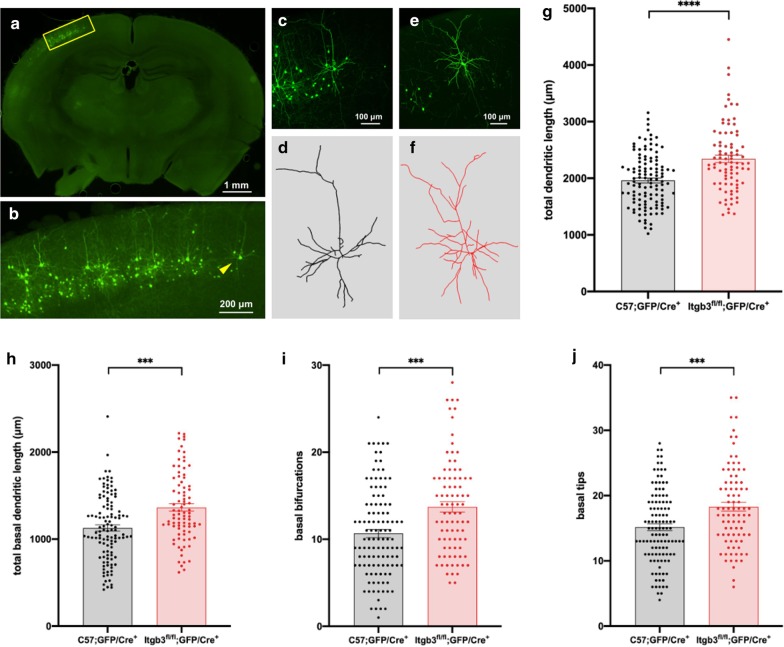Fig. 1.
Itgb3fl/fl;GFP/Cre+ layer II/III cortical pyramidal neurons exhibit higher dendritic complexity than C57;GFP/Cre+ neurons. a Example of a low-magnification (× 4) image taken of a coronal section from a C57 mouse with labeled GFP/Cre+ neurons. b Magnified view of the inset in (a), showing the targeting specificity of GFP-labeled, layer II/III excitatory pyramidal neurons. c Medium-magnification (× 20) maximum intensity Z-projection from confocal images of the neuron identified in (b). d A 3D reconstruction of all apical and basal dendrites of the neuron in (c). e, f As in (c, d), this time of an Itgb3fl/fl;GFP/Cre+ neuron. g Total dendritic length is higher in Itgb3fl/fl;GFP/Cre+ neurons (2342 ± 64.50 μm) when compared to C57;GFP/Cre+ neurons (1962 ± 42.90 μm). h Total basal dendritic length is higher in Itgb3fl/fl;GFP/Cre+ neurons (1363 ± 42.71 μm) when compared to C57;GFP/Cre+ neurons (1128 ± 34.98 μm). i Number of basal bifurcations (branches) is higher in Itgb3fl/fl;GFP/Cre+ neurons (13.72 ± 0.59) when compared to C57;GFP/Cre+ neurons (10.67 ± 0.48). j Number of basal tips (terminal ends of basal dendrites) is higher in Itgb3fl/fl;GFP/Cre+ neurons (18.29 ± 0.68) when compared to C57;GFP/Cre+ neurons (15.16 ± 0.52). C57;GFP/Cre+ neurons were previously reported in Holley et al. [31] and re-analyzed for this study. C57;GFP/Cre+ N = 116 neurons; Itgb3fl/fl;GFP/Cre+ N = 86 neurons. ****p < 0.0001, ***p < 0.001, Mann–Whitney

